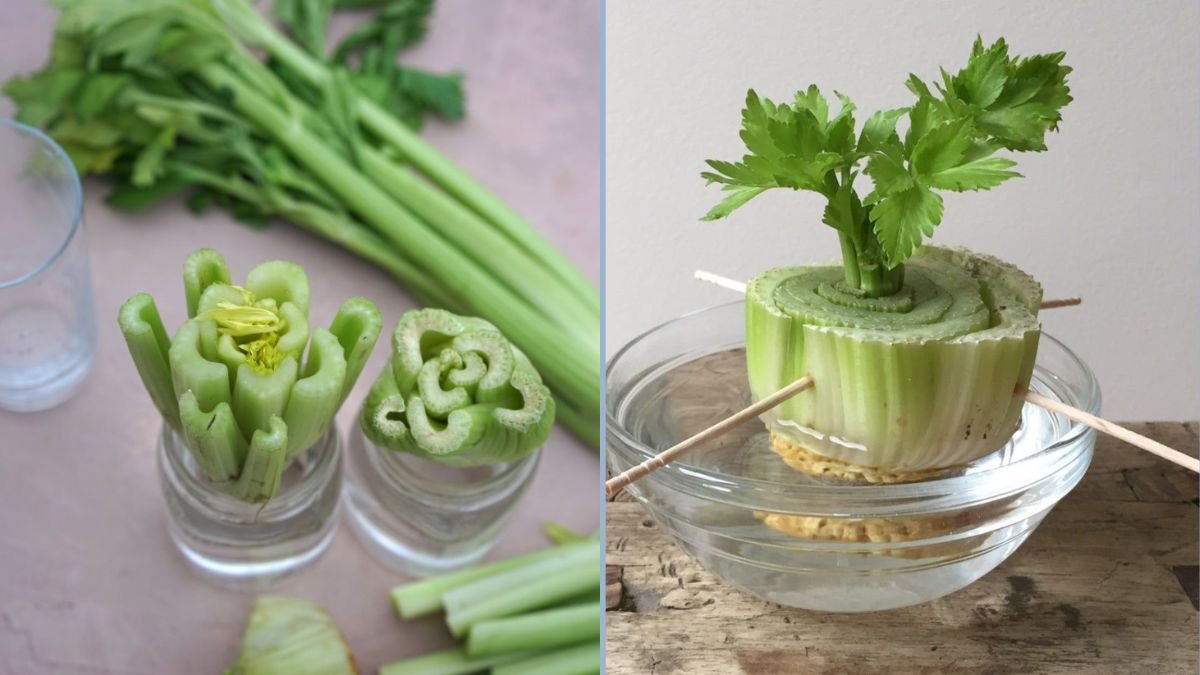Celery is a crisp, refreshing vegetable that adds flavor and crunch to a variety of dishes—from soups and salads to smoothies and stir-fries. But buying celery regularly can be costly, and it often ends up wasting in the fridge before you can finish it. What if you could regrow celery at home, using scraps from the celery you already bought at the store?
Regrowing celery is not only simple but also a rewarding way to save money, reduce food waste, and enjoy fresh produce year-round. In this guide, we’ll show you the absolute easiest method to regrow celery from store-bought stalks, step by step, and explain how to care for your new celery plants so they thrive.
Why Regrow Celery?
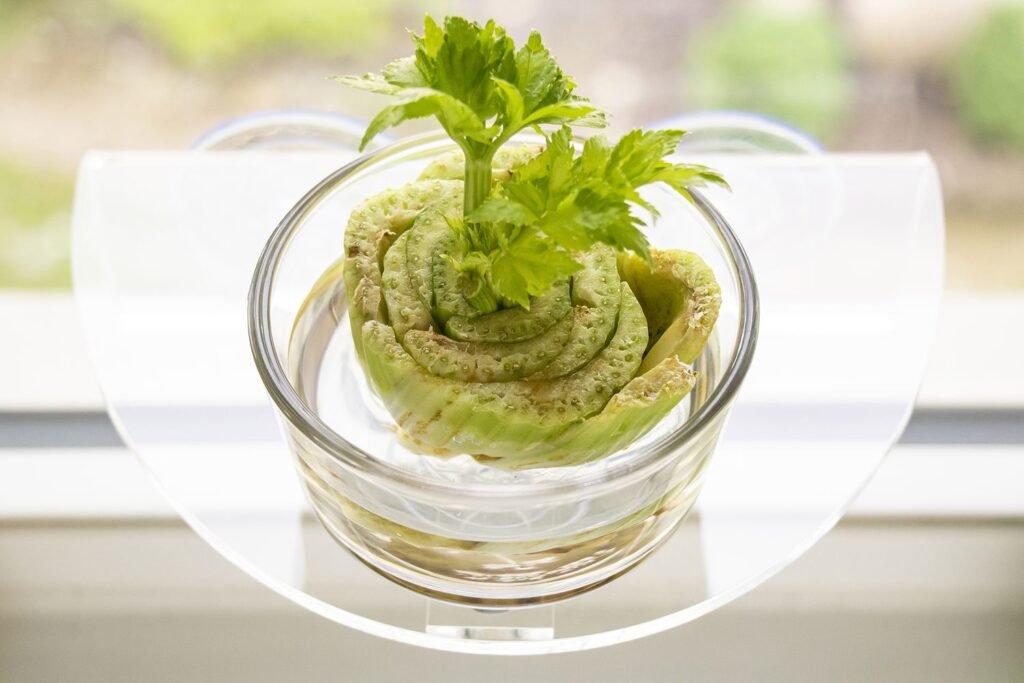
There are several compelling reasons to try regrowing celery at home:
- Cost-effective: Turn a single stalk into a continuous supply of celery.
- Sustainable: Reduces food waste and encourages environmentally friendly habits.
- Convenient: Fresh celery is always available without multiple trips to the store.
- Educational: Perfect for kids and adults alike to learn about plant growth and gardening.
Regrowing celery is one of the simplest vegetables to regrow from kitchen scraps, making it a perfect project for beginner gardeners or anyone with limited space.
Materials You’ll Need
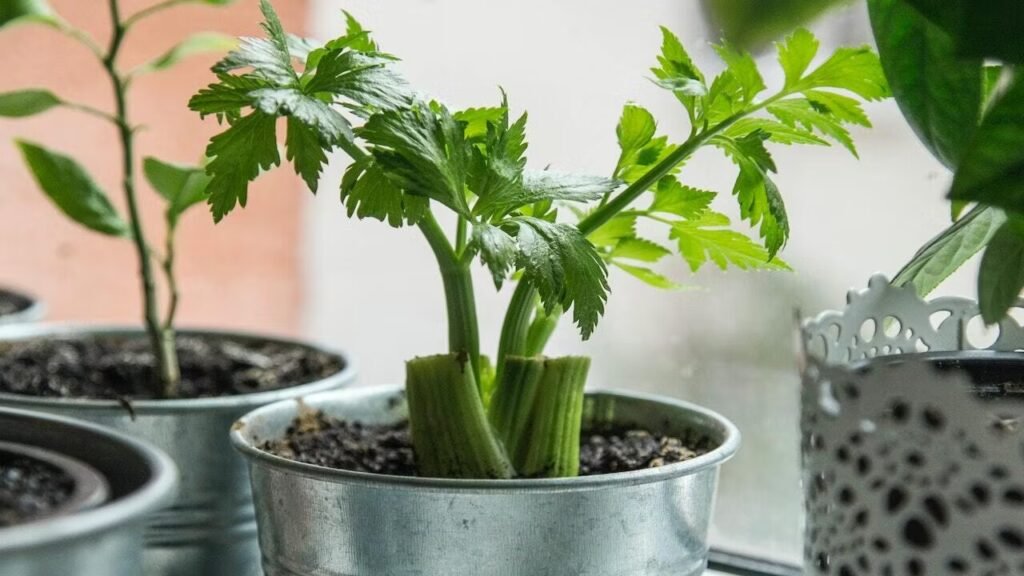
Before you begin, gather these simple materials:
- Store-bought celery stalks (any variety works)
- A small bowl or shallow dish
- Fresh water
- A sharp knife
- Optional: Potting soil and a small pot (if you want to transfer the celery to grow fully)
That’s it! This method requires minimal supplies and almost no gardening experience.
Step-by-Step Guide to Regrowing Celery
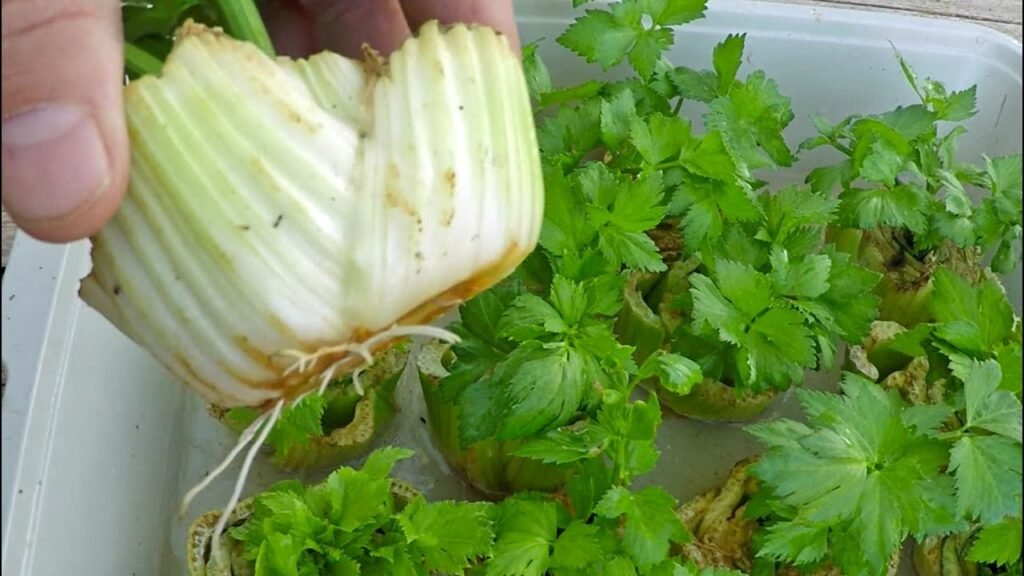
1. Choose Your Celery
Start by selecting a fresh celery stalk with a healthy base. The base, also known as the root end, is the key to regrowth. Make sure the base is intact, firm, and free from rot or discoloration. Even a few inches of the bottom part is enough to regrow a new plant.
2. Cut the Base
Using a sharp knife, cut off the base of the celery stalk about 2–3 inches from the bottom. Keep this base aside, as it will be the starting point for regrowth. You can use the upper part of the stalk in cooking immediately.
3. Prepare the Water Container
Place the celery base in a shallow bowl or dish with the cut side facing up. Add enough water to cover the bottom of the base, but not so much that the entire celery is submerged. Too much water can cause the base to rot.
4. Place in Sunlight
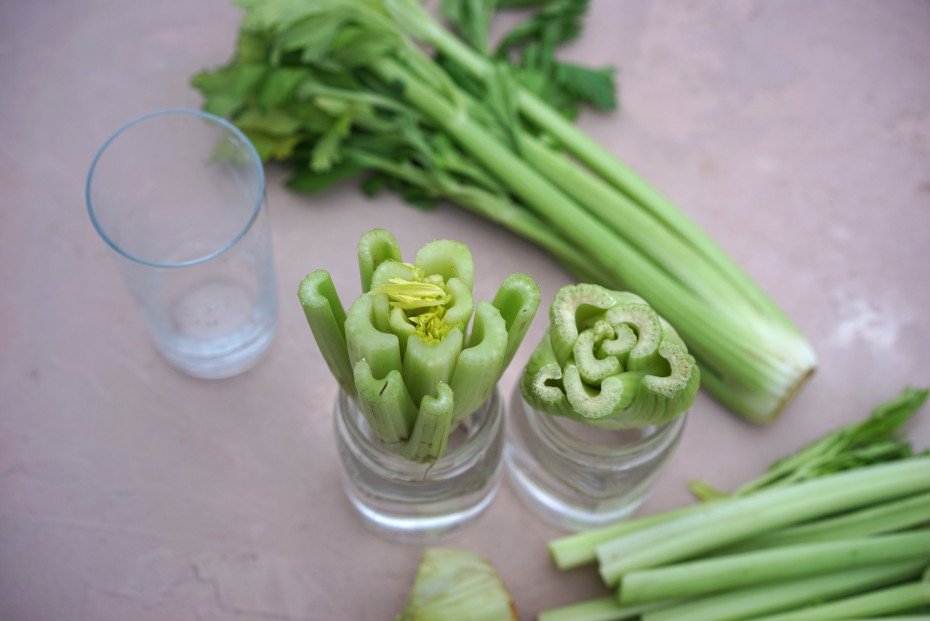
Celery thrives in indirect sunlight. Position your bowl near a window that receives plenty of light, but avoid direct harsh sunlight that could scorch the plant. A bright kitchen counter or windowsill usually works perfectly.
5. Change Water Regularly
To prevent bacteria growth and ensure healthy regrowth, change the water every 1–2 days. You’ll start to notice new leaves sprouting from the center of the base within a few days. Roots may also begin to grow from the bottom if you leave it long enough.
6. Transfer to Soil (Optional, but Recommended)
Once the celery has developed a small cluster of leaves and roots (usually within 1–2 weeks), you can transfer it to soil to grow into a full stalk. Use a small pot with good-quality potting soil and plant the celery base, covering the roots completely while leaving the top leaves exposed.
Keep the soil moist but not waterlogged. Celery prefers consistently damp soil, which mimics the conditions it would grow in naturally.
7. Care for Your Regrown Celery
Caring for regrown celery is simple:
- Sunlight: Provide 6–8 hours of indirect sunlight daily.
- Watering: Keep the soil consistently moist. Celery doesn’t tolerate drying out.
- Fertilizer: Use a mild organic fertilizer once every 2–3 weeks to encourage strong growth.
- Spacing: If planting multiple celery bases, give each plant enough space to grow. Crowded celery may develop weak stalks.
With proper care, your celery plant can grow into a full, harvestable stalk in 3–4 months.
Tips for Faster and Healthier Growth
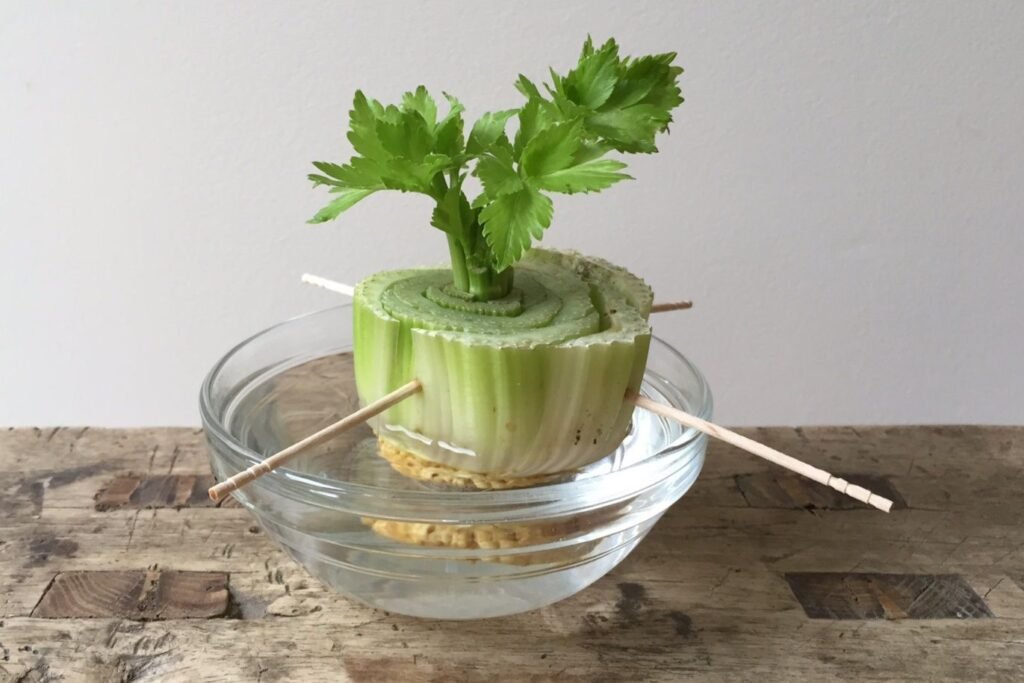
- Use Fresh Celery: The fresher the celery base, the faster it will regrow. Avoid bases that are limp or starting to brown.
- Optimal Temperature: Celery grows best in cooler conditions, around 60–70°F (15–21°C).
- Prune Outer Leaves: As the celery grows, trim older leaves to promote healthy new growth.
- Consistent Moisture: Avoid letting the soil dry out completely. Celery roots are sensitive and need steady hydration.
- Container Choice: For indoor growing, choose a pot that’s at least 6–8 inches deep to allow the roots to develop fully.
Harvesting Your Regrown Celery
Once your celery has grown into a mature stalk, you can harvest it in two ways:
- Cut and Come Again: Trim the outer stalks as needed, leaving the inner stalks to continue growing. This method allows continuous harvesting over several months.
- Full Harvest: Cut the entire plant at the base if you need the full stalk at once. You can also leave a small part of the base in soil to regrow a second time.
Common Problems and How to Fix Them
Even though regrowing celery is easy, you might encounter a few common issues:
- Yellowing Leaves: Usually caused by overwatering or poor light. Reduce water and ensure the plant receives adequate indirect sunlight.
- Slow Growth: Ensure the base is fresh and the water is changed regularly. Consider transferring to soil if growth is stagnant.
- Rotting Base: Avoid submerging the entire celery in water and change water frequently. If rot occurs, trim off affected areas and start again with a fresh base.
Benefits of Regrowing Celery
Regrowing celery at home offers numerous advantages:
- Cost Savings: Buy once, regrow multiple times.
- Freshness: Enjoy crisp, flavorful celery straight from your home garden.
- Reduced Waste: Instead of discarding celery scraps, you can turn them into a new plant.
- Satisfaction: Watching a plant grow from kitchen scraps is both educational and rewarding.
Conclusion
Regrowing celery from store-bought stalks is one of the simplest, most rewarding gardening hacks you can try at home. With minimal materials, basic care, and a little patience, you can transform kitchen scraps into a continuous supply of fresh, homegrown celery.
Not only does this method save money, but it also helps reduce food waste and encourages sustainable living. Whether you’re a seasoned gardener or a beginner looking for a fun indoor gardening project, regrowing celery is an easy, practical, and surprisingly productive activity.
Start with one celery base today and watch it grow. In just a few weeks, you’ll enjoy the satisfaction of turning something that would normally be discarded into a thriving, nutrient-rich plant that enhances your meals and brightens your kitchen.
